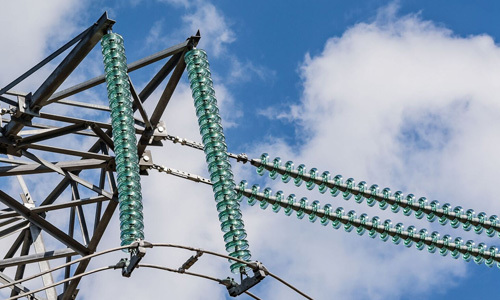Understanding Ceramic Pin Insulators: Key Components in Electrical Applications
2025-05-19
Ceramic pin insulators are designed to support electrical conductors and maintain electrical isolation between the conductors and the ground. Made from high-quality ceramic materials, these insulators are known for their durability, thermal stability, and resistance to environmental factors. The primary function of a ceramic pin insulator is to prevent electrical leakage and ensure that the electr
Ceramic pin insulators are designed to support electrical conductors and maintain electrical isolation between the conductors and the ground. Made from high-quality ceramic materials, these insulators are known for their durability, thermal stability, and resistance to environmental factors. The primary function of a ceramic pin insulator is to prevent electrical leakage and ensure that the electrical current is directed through the intended pathways, thereby minimizing the risk of failures and accidents.
One of the most notable advantages of ceramic pin insulators is their excellent dielectric strength. This property allows them to withstand high voltages without breaking down, making them particularly suitable for use in high-voltage transmission lines. Furthermore, ceramic materials are inherently resistant to moisture, UV radiation, and pollutants, which contribute to their longevity and reliability in harsh environmental conditions.
In addition to their electrical properties, ceramic pin insulators also offer mechanical robustness. They are capable of withstanding various stresses, including wind and ice loads, which is crucial for maintaining the integrity of overhead power lines. Their design often features a pin or spike that allows for easy installation on utility poles, ensuring a secure and stable mounting for electrical conductors.
Ceramic pin insulators are widely used in overhead transmission and distribution systems, particularly in areas where reliability and performance are paramount. They are commonly found in rural and urban electrical networks, where their ability to endure harsh weather conditions enhances the overall resilience of the power supply.
Another important aspect of ceramic pin insulators is their environmental compatibility. Unlike some synthetic materials, ceramics are non-toxic and environmentally friendly, which aligns with the growing focus on sustainability in the electrical engineering field. Additionally, ceramic insulators are often recyclable, further contributing to reduced environmental impact.
In summary, ceramic pin insulators are vital components in electrical systems, providing essential electrical isolation and mechanical support. Their outstanding dielectric properties, durability against environmental factors, and mechanical strength make them a preferred choice for many electrical applications. As professionals in the electrical and power distribution sectors continue to prioritize safety and reliability, the importance of ceramic pin insulators cannot be overstated. Understanding their characteristics and applications will enable industry experts to make informed decisions regarding insulation solutions for various projects.
One of the most notable advantages of ceramic pin insulators is their excellent dielectric strength. This property allows them to withstand high voltages without breaking down, making them particularly suitable for use in high-voltage transmission lines. Furthermore, ceramic materials are inherently resistant to moisture, UV radiation, and pollutants, which contribute to their longevity and reliability in harsh environmental conditions.
In addition to their electrical properties, ceramic pin insulators also offer mechanical robustness. They are capable of withstanding various stresses, including wind and ice loads, which is crucial for maintaining the integrity of overhead power lines. Their design often features a pin or spike that allows for easy installation on utility poles, ensuring a secure and stable mounting for electrical conductors.
Ceramic pin insulators are widely used in overhead transmission and distribution systems, particularly in areas where reliability and performance are paramount. They are commonly found in rural and urban electrical networks, where their ability to endure harsh weather conditions enhances the overall resilience of the power supply.
Another important aspect of ceramic pin insulators is their environmental compatibility. Unlike some synthetic materials, ceramics are non-toxic and environmentally friendly, which aligns with the growing focus on sustainability in the electrical engineering field. Additionally, ceramic insulators are often recyclable, further contributing to reduced environmental impact.
In summary, ceramic pin insulators are vital components in electrical systems, providing essential electrical isolation and mechanical support. Their outstanding dielectric properties, durability against environmental factors, and mechanical strength make them a preferred choice for many electrical applications. As professionals in the electrical and power distribution sectors continue to prioritize safety and reliability, the importance of ceramic pin insulators cannot be overstated. Understanding their characteristics and applications will enable industry experts to make informed decisions regarding insulation solutions for various projects.
Key words:
Related News
Customers from several countries visited our factory for inspection.
Today, our company welcomed important clients from many countries to visit and inspect our factory. This is a significant milestone for our company's global reach, and a moment to showcase our strength and achievements. We are deeply honored and are full of confidence for the future.
2025-04-27
What are the characteristics of glass insulators?
After vacuum injection, the continuous pulling and extrusion of epoxy glass pulling rods is formed after the glass fibers are impregnated with epoxy resin and cured. The insulators used in overhead lines commonly include pin insulators, disc insulators, suspension porcelain bottle insulators, porcelain cross arms, rod insulators, and tension insulators, etc.
2024-05-22
In one minute, let you understand glass insulators.
Glass insulators are widely used in power systems due to their excellent electrical performance, corrosion resistance, and mechanical strength. Next, let's take a detailed look at their advantages.
2024-05-22



















